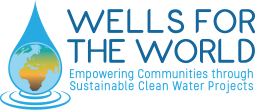Hydrogeology for the Maasai - KINEK WRUA of Kenya
Kitilikini Namuncha Ewuaso Kedong Water Resources Users Association (KINEK WRUA) of Kenya

Our May 2015 trip to Kenya was a success. We provided the Kitilikini Namuncha Ewuaso Kedong Water Resources Users Association (KINEK WRUA), who we met during our 2014 trip to Kenya and Tanzania, with three days of training we are calling "Hydrogeology for the Maasai" (in particular, the water cycle, Darcy's Law, well installation, testing and maintenance techniques), which included a review of the Kenyan Water Act (Act No. 8 of 2002) and the associated Water Resources Management Rules as administered by the WRMA, which is incorporated under the Ministry of Water and Irrigation, a division of the Kenyan federal government. We are so glad to have had the opportunity to spend the time in Maasailand with so many wonderful Maasai and other people and made numerous new friends. Our training was attended by at least 41 WRUA members each day, and on the first day we had 58 people in attendance at one point during the day. Wells for the World is working closely with leadership team of the KINEK WRUA, who received their certificate of registration on March 20, 2014 and are able to undertake water projects with their certification. The members of the WRUA are not technical experts in water management or hydrogeology, but leaders within the community, so Wells for the World provided the "Hydrogeology for the Maasai" training as a follow up to the catchment training we helped support in November/December 2014. The culmination of the catchment training resulting in the development of the Sub-Catchment Management Plan (SCMP), which was published in May 2015 about 10 days before our trip to perform the hydrogeology training. The SCMP is a "living" document that will guide the WRUA for the next three years and then be revised to guide the next three year period. We were able to discuss with the WRUA leaders their water project ideas and discussed their four top priorities for the next year. The WRUA provides a great opportunity to have advocates in Kenya to partner with for water projects.
In May 2015 we repaired the generator associated with the well south of Ewuaso, Kenya we visited in May 2014. The well purportedly produced a lot of water and is piped to a raised water tank above a block pump house building that could provide people with clean drinking water, which in turn overflows to a ground level open top tank that is about 20 feet in diameter and about 8 feet tall that overflows to a couple of troughs that are meant to supply animals with clean drinking water. According to locals, this well worked for a while (several months) and then stopped working. After months of effort trying to work with the water charity that installed the well (click for map of well location) in 2006, Solomon from the KINEK WRUA, which has jurisdiction over the well because of their certification secured the keys to the pump house building, clearing the way to allow us to work on the generator and well. Solomon provided us with photo documentation of the inside of the pump house in mid-April 2015, which helped us prepare for our May 2015 visit. The pump house houses a 23.2 horsepower (Hp) diesel generator capable of producing 17.3 kilowatts to operate the downwell submersible pump. The controls within the pump house are in good condition and there is also a centrifugal pump in the pump house that pumps excess water to the on-grade open-top tank used to provide water to cattle. We spent five days repairing the generator and it is operating properly. However, we determined that the pump down the well is burned out. We are saddened that we were unable to get the well operating during our May 2015 visit, but we are working with the KINEK WRUA to identify a well driller to replace the pump and conduct a pumping test to determine the sustainable yield of the well as required by WRMA rules. We will continue to raise funds to repair this well and provide those in this area of the Great Rift Valley with the water resources the so desperately need. We were unable to getting additional information about the well (boring and well completion logs), but for now the well is thought to be about a 1,100 ft (350 m) deep, and we determined that the submersible pump is a 415 volt, 3 phase motor that appears to draw about 8 to 10 amps. From our research, the pump may be a Grundfos SP 2A-65, which is a 4 horsepower, 3 kilowatt, 65 stage submersible pump. Wells for the World will continue to work with the KINEK WRUA to get the well operational again, determine the well's sustainable capacity and then operate the well within its capacity. Funding for the operation of the generator, turning it on and off on some cycle and providing for fuel for the generator, as well as the long-term maintenance of the generator and well system components will also be needed.
We were able to meet with the Hon. Justus Kiles Ole Ngossor twice during our May 2015 trip, who we first talked to during our May 2014 visit who is the minority leader (i.e., a County Representative) for Kajiado County and a member of the County Assembly for Kajiado County, Kenya, which includes the Ewuaso Oonkidong'i (or Ewuaso, Kenya) area. Justus also knows Matt, Moses and Simon, and Moses works with Justus. Justus has pledged his support for water projects and along with the KINEK WRUA has pledged to be our accountability partners for any water projects within their jurisdiction. Justus is actively conducting water projects; however, there is only so much governmental funding available to complete water projects.







